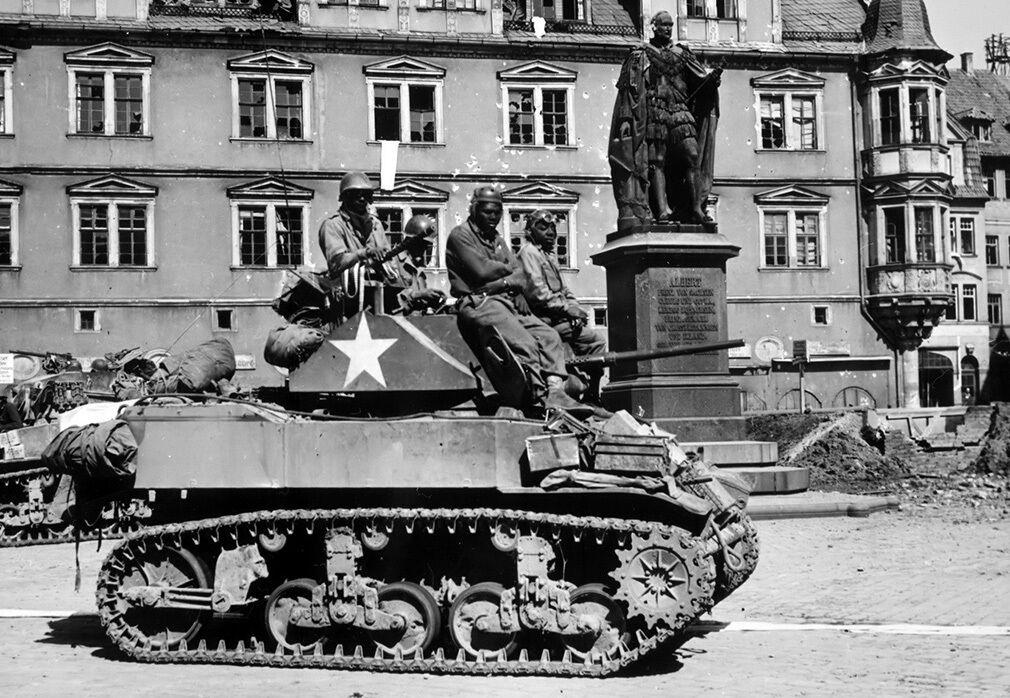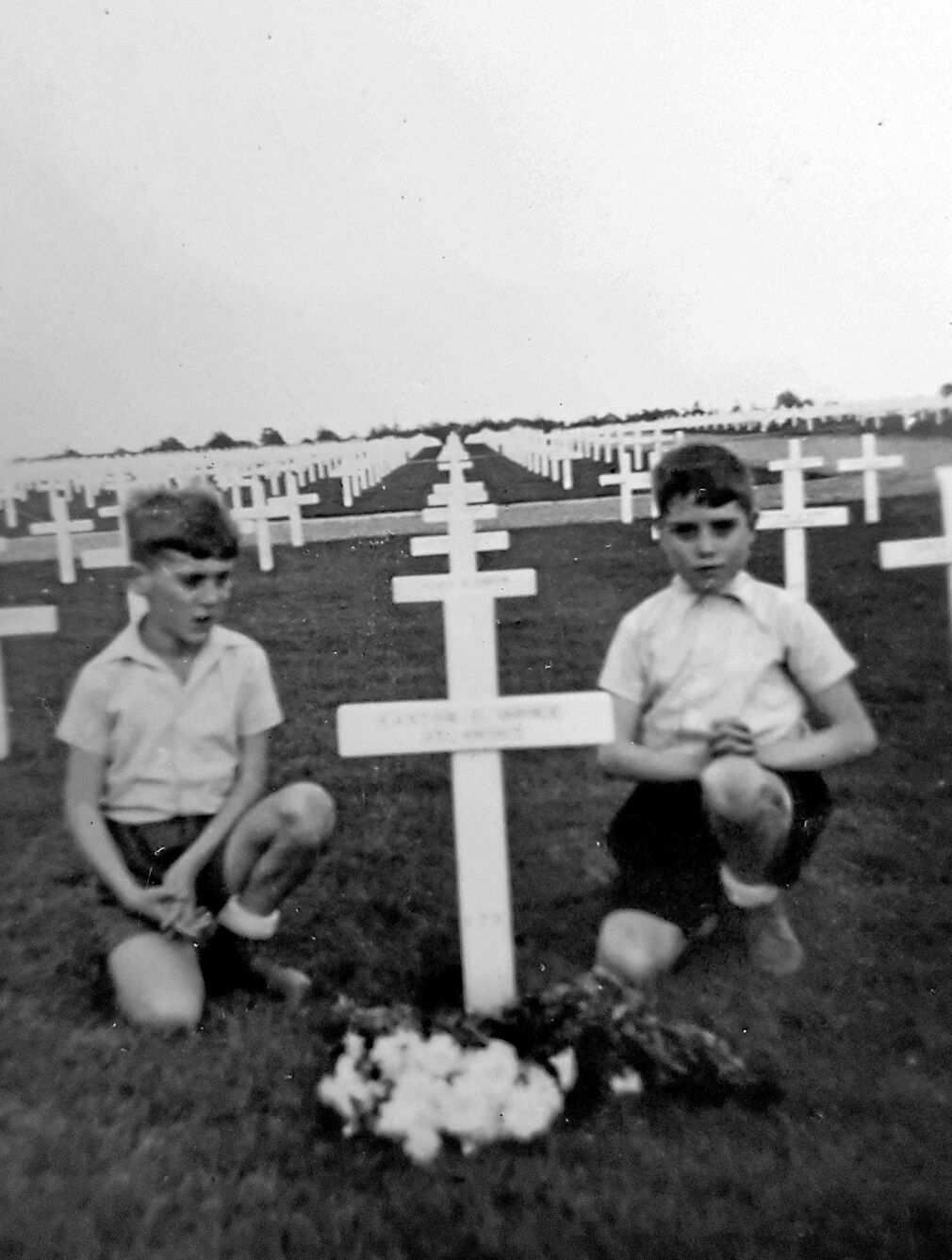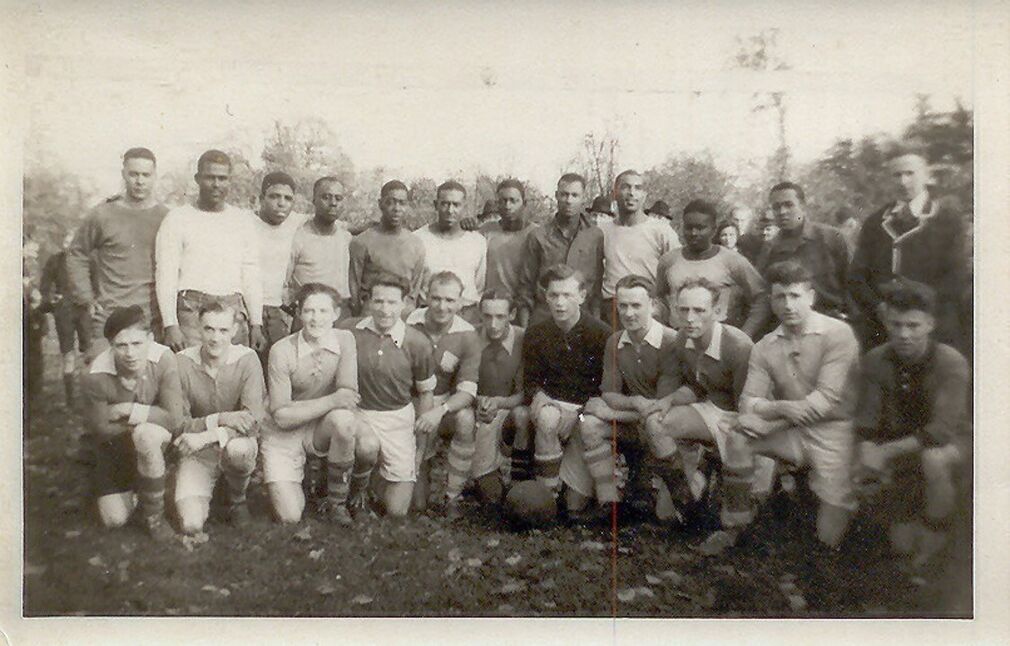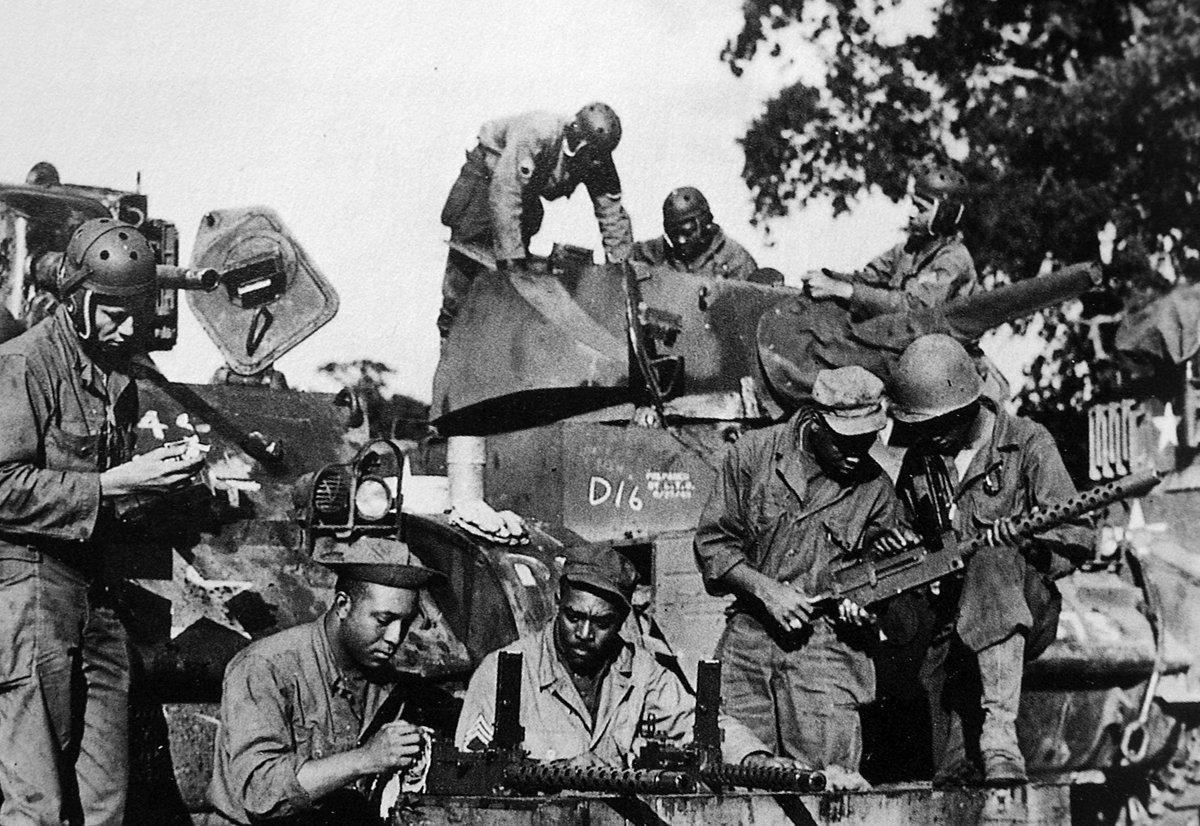Fred Brown
Brown, born in Bronx County, New York in 1924, was part of the 761st All Black Tank Battalion.
Unit Charlie of the 761st All Black Tank Battalion stayed briefly in Mheer in South Limburg from late February to early March 1945. New soldiers who were added to the unit were trained there. The unit received temporary liaison orders in recognition of its performance in the Ardennes. This allowed the men to recover from the battles in which they had participated in Belgium. The rest period in Mheer did not last long. On March 8, 1945, the entire battalion was ordered to travel by train to Saverne (F). There it was used to prepare for a major attack on Germany.
On April 14, 1945, Charlie Company attacked the city of Kulmbach, near Bayreuth. (...) Just outside Kulmbach, the tank unit paused briefly. When Corporal Fred Brown wanted to get back into the tank and climb the armored dome, he was struck by enemy fire. He died shortly afterwards from his injuries. (BiA p. 236)
Brown is buried at the American cemetery in Margraten, Plot P, Row 13, grave 5. He received the Purple Heart award posthumously.




The black Charlie Company camped in Mheer on the meadow in front of the church. In 2017 Mr Lemmerlijn told about his memories of the black soldiers' stay in the village. He was not aware at the time of racial separation in the American army. The church meadow on which the tents of the Americans were placed was an alternative to a stay in a Rest and Recreation Center (R&R). At that time, the R & Rs where American soldiers could recover after a heavy effort were "for whites only".
At that time, the R&R's where American soldiers could recover after a heavy efforts were For whites only.


Mr. Lemmerlijn (at the time 15 years old) is in the lower left of this photo. He is the son of the then referee of the MBC team (Mheer Banholt Combinatie) that occasionally played a match with the 761st team.
In 1947 the Haan van de Kakertsweg family in Schaesberg adopted the grave of Fred Brown. To this day, the family regularly visits the grave.
The Haan family, who adopted Brown's grave in 1947, tried in vain to trace the relatives of "their soldiers" to find out more about Brown. It wasn't until 2018 that son Jacques heard from Mieke Kirkels that Fred Brown appears in the book "Brothers in arms, the epic story of the 761st Tank Batalion, WWII's forgotten heroes. (Kareem Abdul-Jabbar, 2005, Harlem Moon, Broadway Books, N.Y.)
